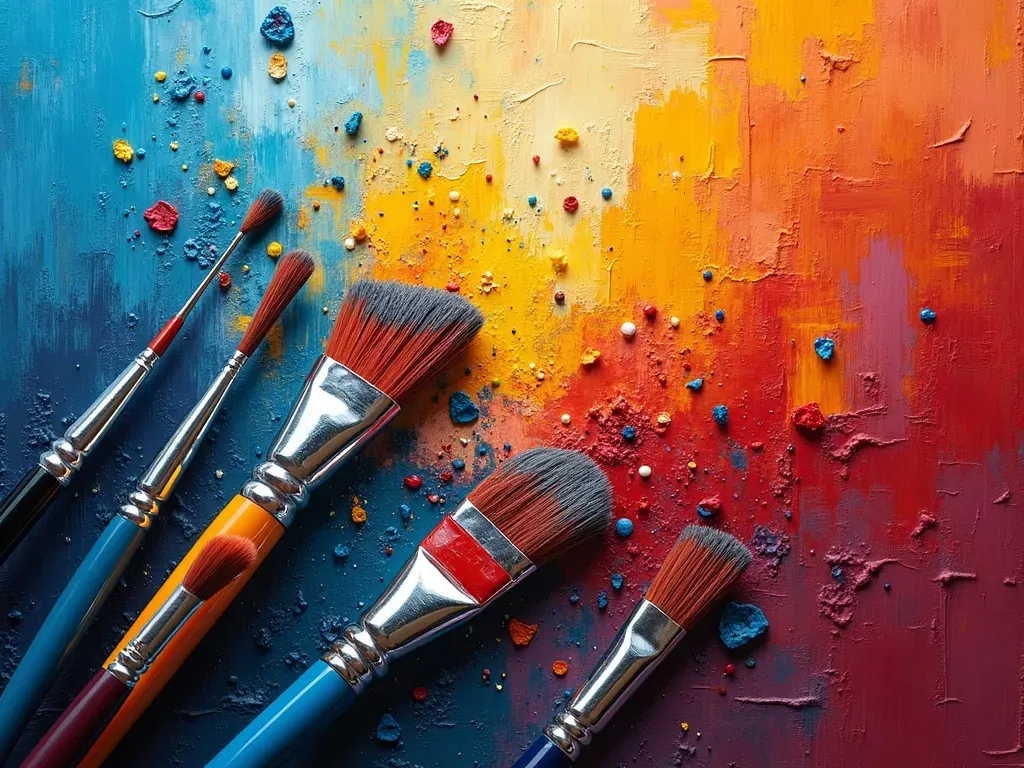Modern oil paintings encapsulate a fusion of traditional Techniques and contemporary themes, providing a refreshing perspective on the timeless medium of oil painting. With vibrant colors, varied textures, and innovative styles, modern oil paintings have become a significant showcase in the art world, attracting both collectors and casual admirers alike.
The Rise of Modern Oil Paintings
In recent years, modern oil paintings have gained traction as artists explore diverse subject matters and styles. Contemporary oil painters are no longer bound by traditional representation but instead experiment with abstract forms, surreal compositions, and even hyper-realistic portrayals. This artistic evolution not only enriches the canvas but also reflects the complexities of modern life.
Historical Context
| Era | Key Characteristics | Notable Artists |
|---|---|---|
| Renaissance | Revival of classical themes, realistic representation | Leonardo da Vinci, Michelangelo |
| Baroque | Emotional depth, dramatic contrasts | Caravaggio, Rembrandt |
| Impressionism | Focus on light and color, loose brushwork | claude monet, Edgar Degas |
| Modernism | Breaking away from tradition, exploration of abstraction | Pablo Picasso, Wassily Kandinsky |
| Contemporary | Embraces diverse styles, media blends, and personal themes | Yayoi Kusama, Damien Hirst |
These eras have paved the way for contemporary oil painters to draw Inspiration from various movements, creating a rich tapestry of styles and narratives that resonate with the current generation.
Characteristics of Modern Oil Paintings
Modern oil paintings exhibit a variety of characteristics that set them apart from traditional works. Key aspects include:
- Bold Color Palettes: Contemporary artists often utilize vibrant colors to evoke emotion and create striking compositions.
- Mixed Media Applications: The integration of various materials, such as collage elements or digital components, adds depth and texture.
- Narrative Complexity: Artists frequently convey personal stories or societal critiques, making their artworks relatable to a broader audience.
- Diverse Techniques: Techniques such as impasto, glazing, and wet-on-wet are prevalent, showcasing the versatility of oil paint.
Exploring Popular Modern Oil Painting Styles
Various styles have emerged within modern oil paintings, each with its unique flair:
| Style | Description | Notable Artists |
|---|---|---|
| Abstract | Dismisses representational accuracy, focusing on forms and colors | Mark Rothko, Jackson Pollock |
| Surrealism | Combines realistic details with dream-like scenes | Salvador Dalí, René Magritte |
| Impressionism Revival | Builds on traditional impressionism while adding personal interpretations | Pierre-Auguste Renoir, Berthe Morisot |
| Pop Art | Incorporates elements from popular culture | Andy Warhol, Roy Lichtenstein |
| Street Art Influence | Blends contemporary graffiti techniques with oil painting | Banksy, Jean-Michel Basquiat |
These categories reflect the dynamic nature of modern oil paintings, each channelling unique artistic expressions and cultural narratives.
Notable Contemporary Oil Painters
The contemporary art scene features a plethora of talented artists specializing in modern oil paintings. Some notable figures include:
- Yayoi Kusama – Known for her immersive installations and vibrant polka dots, Kusama’s oil paintings reflect her distinctive style.
- Gerhard Richter – Blending abstraction with realism, Richter’s works provoke thought and challenge viewers’ perceptions.
- Julie Mehretu – Utilizing mapping techniques and vigorous brushwork, Mehretu’s oil paintings highlight themes of globalization and cultural histories.
These artists exemplify the innovative spirit driving modern oil painting today.
The Process of Creating Modern Oil Paintings
Creating modern oil paintings involves various stages, each contributing to the final artwork:
- Concept Development: Artists begin with a concept, often inspired by personal experiences or contemporary topics.
- Sketching: Preliminary sketches help define composition and layout.
- Layering: Oil painting allows for layering techniques; starting with underpainting and gradually building up layers to achieve depth.
- Finishing Touches: After the primary elements are established, details and textures are added to complete the artwork.
The Impact of Technology on Modern Oil Paintings
Technology has significantly influenced modern oil paintings, particularly in terms of marketing, techniques, and education. Digital platforms allow artists to showcase their work globally, facilitating connections with collectors and critics. Additionally, tools such as digital painting software have expanded educational resources and artistic possibilities.
FAQs About Modern Oil Paintings
What makes modern oil paintings different from traditional ones?
Modern oil paintings prioritize personal expression, experimental techniques, and a wide range of themes that reflect contemporary society, unlike the more regulated forms of traditional oil paintings.
Where can I purchase modern oil paintings?
There are numerous online platforms to explore and purchase modern oil paintings, such as Saatchi Art and My Modern Met, offering a wide array of selections from emerging artists worldwide.
Are modern oil paintings a good investment?
Investing in modern oil paintings can be rewarding, especially works by recognized or emerging artists, as appreciation in value can be significant over time. However, thorough research is advised.
How have modern oil painting techniques evolved?
Innovative practices such as incorporating mixed media and experimental forms have revolutionized oil painting, expanding its expressive potential and allowing artists to break traditional boundaries.
Conclusion
Modern oil paintings are not just mere decorations—they are a visual language that resonates with viewers, communicates complex emotions, and reflects the intricacies of contemporary life. Through dynamic techniques, diverse styles, and a reflective approach to subject matter, these works challenge traditional boundaries while celebrating the rich history of oil painting.
Whether you are an art connoisseur or a casual enthusiast, exploring the realm of modern oil paintings can lead to a deeper appreciation of the relentless spirit of creativity that continues to shape our world today.
